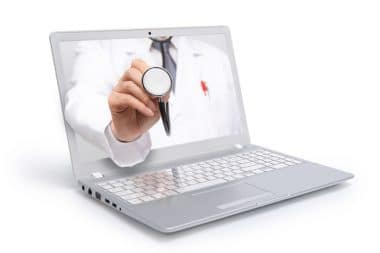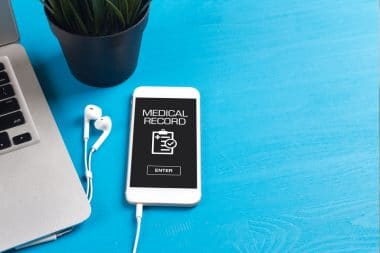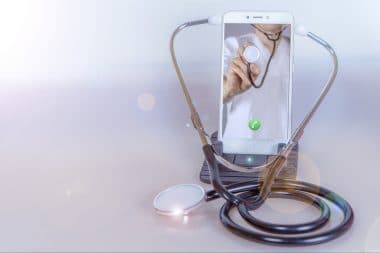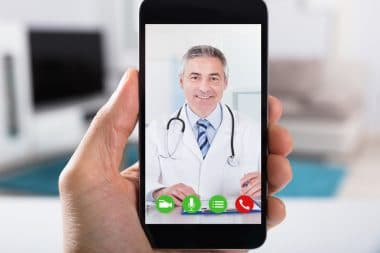Largely done as a means to avoid the spread of COVID-19, medical facilities are currently implementing work-from-home schemes for some of their workers. However, the shift to reduce in-office reporting for health staff has been in place even before the pandemic. Known health companies and medical facilities have been hiring remote workers for years.
The demand for workers in the healthcare sector is ever-increasing. In fact, the Bureau of Labor Statistics projects that healthcare jobs are expected to grow by 18% from 2016 to 2026–one of the highest for all types of occupation.
With the pandemic, the need for medical staff has only intensified. While primary care is left in the hands of nurses and physicians, some healthcare staff work on the sidelines to support overall operations. The industry owes much of its non-core activities to competent professionals located overseas.
Healthcare Remote Work #1: Healthcare BPO
Almost all aspects of business operations can be outsourced these days, including healthcare industry activities. In a nutshell, healthcare business process outsourcing (BPO) covers activities that medical service providers pass on to third parties. These external companies do the jobs outsourced by healthcare facilities and service providers to them. Third-party contracting can be done by hiring freelancers working remotely or tapping companies offering several sought-after services.
By outsourcing mostly administrative-related activities, medical facilities can rest, knowing that their staff are able to focus and hone their skills and provide better care to its patients.
Below are the most common non-core tasks being outsourced by medical service providers to freelancers or third-party forms:
1. Data Entry Services
Hospital workers, especially those assigned in records-keeping, handle and update voluminous stacks of records on a daily basis. These records can be anything, including lab tests and reports, drug prescriptions and inventory, and patient insurance details, among others.
Medical data entry specialists are tasked to encode important details into a health information system. Some of them have additional tasks, such as maintaining electronic records and logs, running reports, filing electronic records, and collecting data from various sources
Medical facilities need to have healthcare document scanners in order to provide remote workers with the correct data to work on.
2. Medical Coding and Billing
These activities involve handling patients’ medical records and form part of the medical reimbursement cycle. Medical coders interpret significant information in a certain patient’s visit into numeric and alphanumeric codes. Medical billers take information from medical coders to ensure that insurance claims are billed correctly.
3. Claims Processing
The work done by medical coders and billers are then passed on to claims processors. When a patient files a claim, a processor helps insurance companies validate claim requests for correct information, justification, and authenticity. After validation, the medical insurance company will either reimburse medical providers or reject the claim if anomalies are discovered.
Healthcare Remote Work #2: WFH set-up for healthcare workers.
1. Online Tools For Healthcare Staff
Managers and leaders supervising these types of work setup can ensure efficiency by tapping online productivity and project management apps to ensure that the staff can work on their tasks even while at home. Some platforms come with communication channels where team members can share and support each other, both professionally and personally. Video calls and other apps for online meetings are widely available for team members and supervisors to interact and discuss work-related issues.
2. Using Technology To Limit Physical Interaction
Some healthcare facilities use electronic visit verification to monitor workers. In some instances, hospitals use chatbots to entertain queries and attend to patients online, cutting the need for receptionists to personally appear in the medical facilities.
In more advanced hospital settings, the use of artificial intelligence (AI) is being improved, cutting staffing for support teams in the dietary and housekeeping departments. AI technology is being harnessed, too, for better diagnostic procedures and integrated data consolidation for patients with records from various hospitals or medical facilities.
3. Providing Mental Health Support
The pandemic has taken its toll on almost everybody’s mental health, but some may not be capable at coping. Parents, for instance, are burdened by online learning. Thus, in addition to the demands from work, family responsibility, and maintaining household tasks, a remote employee may not have adequate time in their hands for self-care. Managers, then, shouldn’t only ensure work efficiency, but also stress on the emotional and psychological needs of their remote workers by offering flexible remote work arrangements.
Office organizations, including those in healthcare industries, should exert full support to all of their employees, especially those working remotely. By showing that the leadership takes into consideration the mental health and overall well-being of its staff, the management will be able to enhance participation and engagement among its employees, allowing the organization to maintain its standards and to meet its goals.
Healthcare Remote Work #3: Telemedicine
‘Medicine practiced from a distance’ is how the World Health Organization (WHO) describes telemedicine. Using telemedicine software, patients can see a doctor for diagnosis and treatment without having to wait for an appointment. Additionally, a patient no longer has to go to the clinic to avail of medical services.
Using digital and telecommunications technology tools, physicians and other healthcare professionals can transmit digital imaging, as well as perform video consultations. By utilizing secure video and audio connection channels, doctors and specialists can convey treatment for patients who reside in locations with limited access to care.
How’s It Done?
There are several ways to conduct telemedicine, with video calling as the most common. However, most countries require health information privacy set forth by the Health Insurance Portability and Accountability Act of 1996 (HIPAA) standards upheld, especially that the health data shared online may be subjected to cyber hacking. There are secured and HIPAA-compliant video conference tools offered by various healthcare providers.
Some methods require physicians to take portable telemedicine kits, which consist of mobile medical devices (vital signs monitors or ECGs), computers, and high-resolution digital cameras. These equipment are needed to send and exchange detailed medical images to specialists.
Final Thoughts
Remote work, it seems, is helping the healthcare industry address its need for more non-clinical staff and work-from-home setups. And, as long as pandemic restrictions are in place, it seems that working remotely has and will become the new normal.








Reply